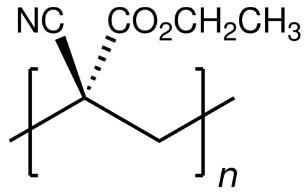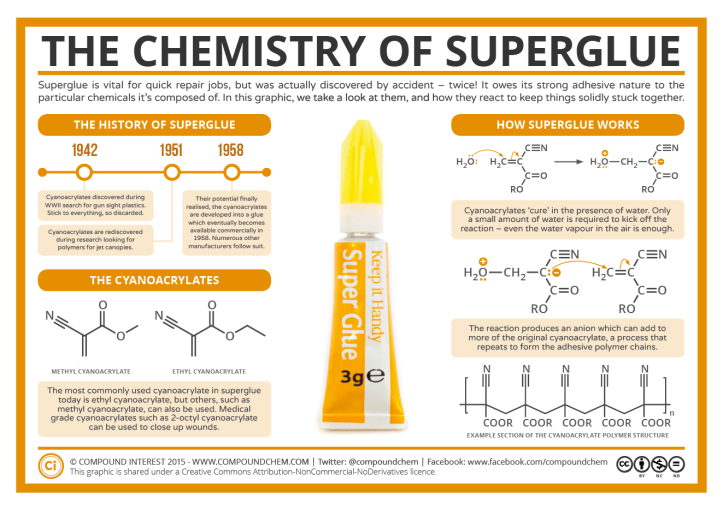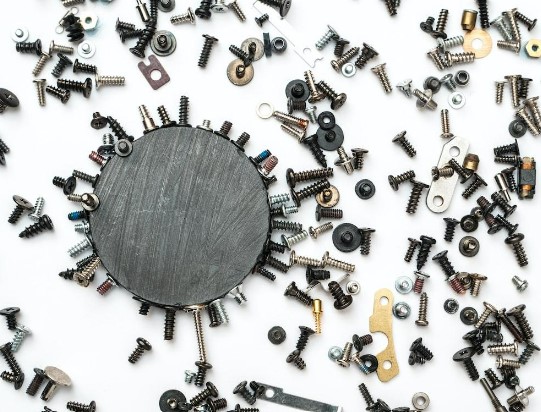You have probably seen someone use false eyelashes to enhance their looks. These thin fibers that resemble natural eyelashes are hidden under coats of mascara and camouflaged to make it look natural. What you might not have realized is that nanomaterials play a role in how these eyelashes work!

There are many kinds of false eyelashes available to cater to different desired looks, ranging from subtle and natural to dramatic and bold. However, the procedures you follow are the same regardless:
- curl your real lashes with an eyelash curler
- cut the false lashes to desired fit
- add adhesive to the fine band at the base of each row of false lashes
- wait for the adhesive to dry and become tacky
- stick the lashes onto your lash line
- voila!
But what is in the adhesive you’re sticking to your eyelid? Can you use any kind of adhesive? Can you use something like Super Glue®? It turns out the cyanoacrylate that lends superglue its stickiness is also present in your false eyelashes glue, or at least a form of it. Cyanoacrylate is a monomer, a molecule made of nitrogen, oxygen, hydrogen, and carbon atoms that can form a chain of duplicates of itself to make a long polymer.

When it’s in monomer form, cyanoacrylate is a liquid (the glue in the tube before you use it), but when it combines into a long polymer chain it sets into a hard solid. What makes it connect up as a polymer is water! It can react with very small amounts of water: as small as the amount of water vapor in the air is enough to initiate the reaction. So since there is moisture in the air and on your lashes, that can set off the polymerization reaction that forms a strong bond between the false lashes and your real lashes once it has set. You can read more about the chemistry of superglue in this infographic.

Cyanoacrylate uses intermolecular forces to hold your false lashes in place, but there are some lashes that use magnetic force instead! Unlike the adhesive false lashes where the adhesive is added to the lashes band before application, the magnetic false lashes contain tiny magnets in the lash bands that can be snapped on to your eyelids using magnetic eyeliner. One downside to cyanoacrylate is that it can release irritants including formaldehyde and acetic acid,1 while magnetic eyeliner materials only contain iron oxide, which generally does not irritate the skin.
Let’s dig deeper into the nanoscale science that makes these magnetic lashes work! There are several kinds of iron oxide we run into on a daily basis, including as rust and as a component of steel. But the eyeliner you put on your eyelid includes iron oxide nanoparticles, which are a bit different.2 In bulk (bigger than nano) iron oxide, the magnetism is multidomain, meaning the magnetism varies across the material. But as their size decreases below ~100 nm, iron oxide nanoparticles become single domain, meaning the magnetism is consistent across the material. At the nanoscale, iron oxide nanoparticles exhibit superparamagnetic behavior and have been used in various disciplines, including data storage, environmental remediation, and nanomedicine3,4 (check out our other blog post on this topic).

Iron oxides are considered non-toxic and are commonly found in many pigmented cosmetics such as lipsticks, eyeshadows, and sunscreens regulated by the FDA. The strong magnetic attraction between the iron oxide nanoparticles in magnetic eyeliner and the tiny magnets on the false lash bands can speed up your beautifying process by eliminating the step of waiting for the glue to dry and can give you the confidence that your lashes are secured all day long.
Would you give these magnetic false lashes a try? No matter what you do with your eyelashes, it is important to keep good hygine and learn more about the eye cosmetic safety checklist outlined by the FDA!

REFERENCES
- Stoye2013-06-12T00:00:00+01:00, E. (n.d.). “Cyanoacrylate.” Chemistry World. Retrieved August 9, 2023, from https://www.chemistryworld.com/podcasts/cyanoacrylate/6261.article
- Hunter, L. A. (n.d.). Magnetically attachable eyelash prosthetic system and related methods. Retrieved August 9, 2023, from https://patents.google.com/patent/US20190261715A1/en?q=MAGNETIC+EYELINER&oq=MAGNETIC+EYELINER
- Ali, A. et al. Synthesis, Characterization, Applications, and Challenges of Iron Oxide nanoparticles. Nanotechnology, Science, & Applications 2016, 9, 49-67. doi: 10.2147/NSA.S99986
- Ajinkya et al. Magnetic iron oxide nanoparticle (IONP) synthesis to Applications: Present and Future. Materials, 2020, 13(20), 4644. doi: 10.3390/ma13204644
